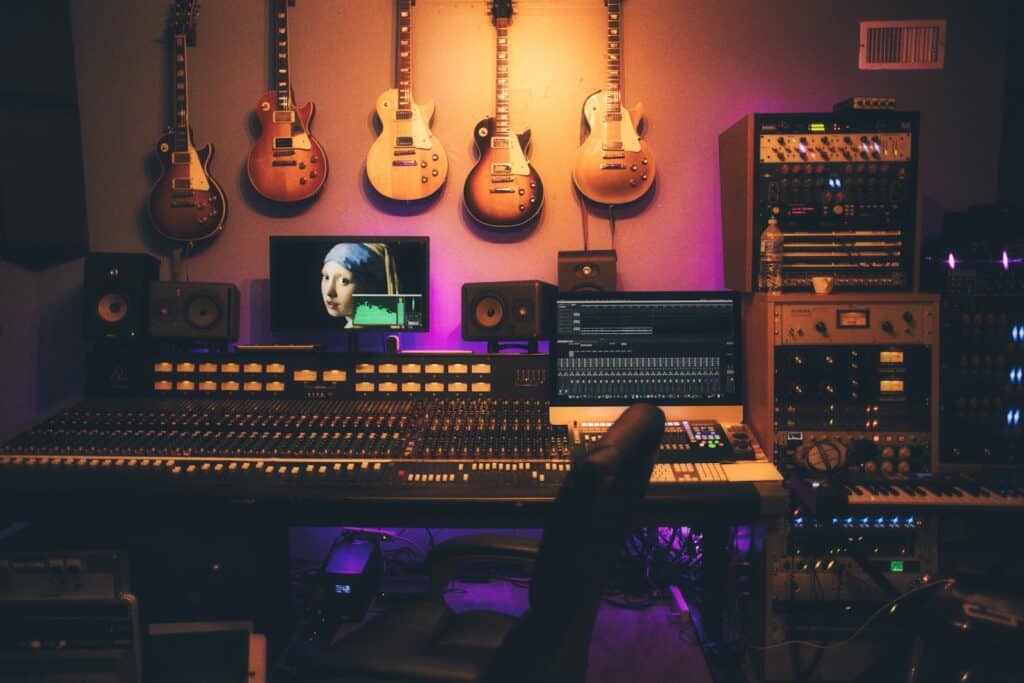
From Concept to Final Mix: A Behind-the-Scenes Look at Music Production
Music production is an intricate and creative process that transforms a simple idea into a fully realized track. Whether you’re an artist or a producer, understanding the various stages of production can help you bring your musical vision to life. In this blog, I’ll take you through the journey from concept to final mix, offering insights into each step of the process.

1. Conceptualization: The Seed of the Song
Every great track starts with a concept. This is the stage where ideas begin to take shape—whether it’s a melody, a lyrical theme, or a specific mood you want to convey. The concept doesn’t have to be fully formed; it’s just the seed that will grow into the final song.
In my own experience, this stage often involves a lot of brainstorming and experimentation. I might start with a simple guitar riff or a vocal hook and build around that. Sometimes, the concept is inspired by a specific emotion or event, which then influences the direction of the song. The key here is to remain open and flexible, allowing the concept to evolve naturally.
2. Pre-Production: Planning and Arranging
Once the concept is in place, it’s time to move into pre-production. This phase is all about planning and arranging the various elements of the song. You’ll decide on the song’s structure, tempo, key, and overall vibe. It’s also the time to flesh out the arrangement, determining which instruments will be used and how they will interact with each other.
During pre-production, I often work closely with the artist to ensure that the arrangement aligns with their vision. We’ll create rough demos, experiment with different sounds, and make adjustments as needed. This is a crucial step because it sets the foundation for the entire production process.
3. Recording: Capturing the Performance
Recording is where the magic starts to happen. This is the stage where the ideas and arrangements are brought to life, capturing the performances that will become the heart of the track. Depending on the project, this could involve recording live instruments, programming electronic elements, or a combination of both.
In the studio, I focus on capturing the best possible performance from each musician. This often means doing multiple takes and experimenting with different microphone placements, tones, and techniques to achieve the desired sound. The goal is to create recordings that are not only technically solid but also emotionally resonant.
4. Editing: Refining the Raw Tracks
Once the recording is complete, it’s time to move into the editing phase. Editing involves cleaning up the raw tracks, correcting any mistakes, and ensuring that everything fits together seamlessly. This might include tasks like cutting and pasting sections, tightening up timing, and tuning vocals.
Editing is a meticulous process that requires a keen ear for detail. It’s about making sure every element of the track is polished and professional without losing the energy and feel of the original performance. A well-edited track is the foundation for a great mix.
5. Mixing: Balancing and Enhancing the Track
Mixing is where the individual elements of the track come together to create a cohesive whole. The mixing process involves balancing the levels of each instrument and vocal, adjusting EQ and compression, adding effects, and creating the final stereo image.
During mixing, I pay close attention to how each element interacts with the others. The goal is to enhance the track’s emotional impact, ensuring that the vocals cut through the mix, the instruments complement each other, and the overall sound is powerful and engaging. This is also the stage where I’ll add creative touches, such as reverb, delay, and automation, to give the track its final character.
6. Mastering: Polishing the Final Product
Mastering is the final step in the production process. It’s all about polishing the mixed track to ensure it sounds great on all playback systems. Mastering involves adjusting the overall EQ, compression, and loudness of the track, as well as preparing it for distribution.
While some artists choose to have their tracks mastered by a dedicated mastering engineer, I often handle the mastering process myself, especially for projects where I’ve been involved from start to finish. The goal is to create a final product that is polished, professional, and ready for release.
7. Delivery: Sharing Your Music with the World
After the track has been mastered, it’s ready to be delivered to the artist and prepared for release. This could involve creating final files for digital distribution, preparing physical media, or uploading the track to streaming platforms.
At this stage, I also work with the artist to ensure that all the necessary files and formats are available for future use, whether for remixes, live performances, or promotional purposes. The delivery phase is the culmination of all the hard work and creativity that has gone into the project, and it’s always exciting to see the final product out in the world.
Conclusion
The journey from concept to final mix is a complex and rewarding process that requires both technical skill and creative vision. Each stage of production plays a vital role in bringing a song to life, from the initial spark of an idea to the polished final product. By understanding and embracing each step, you can ensure that your music not only meets your expectations but also resonates with listeners on a deep level.


